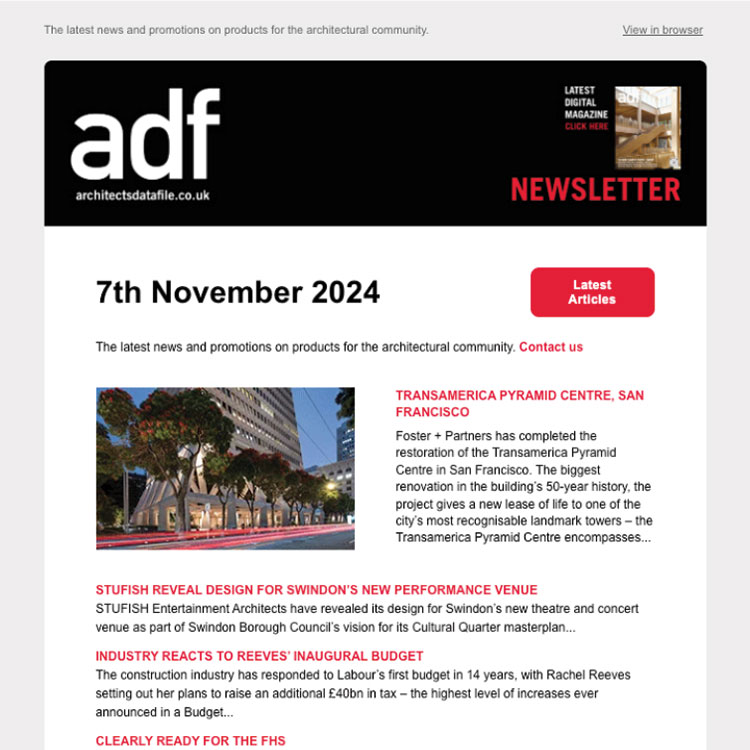Cory Schmidt from Canto explains how the use of this software is aiding architectural practise
Digital asset management (commonly referred to as DAM) solves one of the biggest problems most firms have today – an overabundance of digital content. It takes this content and stores it centrally for internal colleagues, as well as enabling fast, secure access for outside clients and partners.
Digital file storage has been available in various guises for many years. So what’s fuelling increased adoption in the creative industries, including architecture? And what do you need to know?
What is DAM?
In the architecture world, typical digital assets include images, videos, documents, presentations, design files and other media. These files usually bear intellectual property value and with associated rights, they are considered an asset. Such digital assets are growing exponentially as content creation and sharing increases.
Put simply, DAM is a solution to help consistently store digital assets in a central location so they can easily be found and shared.
But why would you consider a dedicated DAM solution when a shared server or Dropbox-type service can provide everyone access?
It’s the sheer volume of digital content now produced on a weekly basis, as well as the need to easily navigate the archives of previous projects, that means content sharing and storage requirements go way beyond basic functionality. Furthermore, this type of management requires everybody within the organisation, and even outside suppliers or freelancers, to work in the same way so that the security, organisation and searchability of digital assets is consistent.
Consider productivity too – it empowers employees, helping them quickly find tagged assets, saving them from long searches or taking up the time of colleagues to track down what they’re looking for. “Does anyone know where I can find…?” is a question we’ve all heard in the office. Eliminating this helps everyone spend time focused on what really matters.
Why and how are architects and the wider industry using DAM?
The primary use-case for architectural firms is centralised, internal storage for increased in-house efficiency. This means creating a consolidated area for all digital assets to be stored where individuals and separate project teams all have access and can send/retrieve assets to/from the DAM.
Often practices and studios have their own cloud-based storage methods, including common services like Dropbox, Google Drive or Box. But in a professional environment, storage capacity and ease of sharing and access can quickly become an issue. Typically images and files shared are high-quality and smaller firms in particular can run into the problem of having too much data for a smaller general system like Dropbox. Dedicated DAM software uses the likes of Amazon Web Services to offer ample storage capacity. It keeps assets in one central location, with tagging so they can easily be found and shared.
If your files contain metadata, that’s searchable too. If any of your imagery contains people, facial recognition allows you to search for all files featuring that individual.
The integration of graphic design programmes within a dedicated DAM solution also helps boost efficiency. For example, DAM software integrates with InDesign and Photoshop. This enables faster editing, particularly where quick and simple changes are required. Importantly, the saving of new file versions is synced with the centralised DAM storage system. So there’s no danger you will save your update to a local destination where others cannot see nor access your new version.
How can DAM improve working relationships with external parties?
Often your files for a particular project are all saved in a master folder location. It may not be appropriate to grant full access to the entirety of that content to a third-party. Nor is it desirable to have to regularly split files into multiple folders. With DAM, admins can allow an approved individual or team access to only the assets you require them to have.
Version control. This is often a problem for architects and designers, particularly when working on collaborative projects. Different studios or individuals can unwittingly be working concurrently on different versions of a project file. DAM helps to solve this with clear version control. It manages updates and to all types of files, including images, presentations and brochures – it’s a way for teams to ensure all versions of digital assets are up-to-date.
And for many firms, being able to provide a brand portal containing prescribed assets for external parties to use is vital for design consistency. For example, firms may have their own templates which they want to give secure access to, and through one familiar centralised system. With DAM access can be granted in a matter of clicks.
Next time it’s taking you longer than it should do to find a file, or you’re picking assets to share with somebody outside your organisation, consider: might there be a better way?
Cory Schmidt is a DAM expert at Canto


